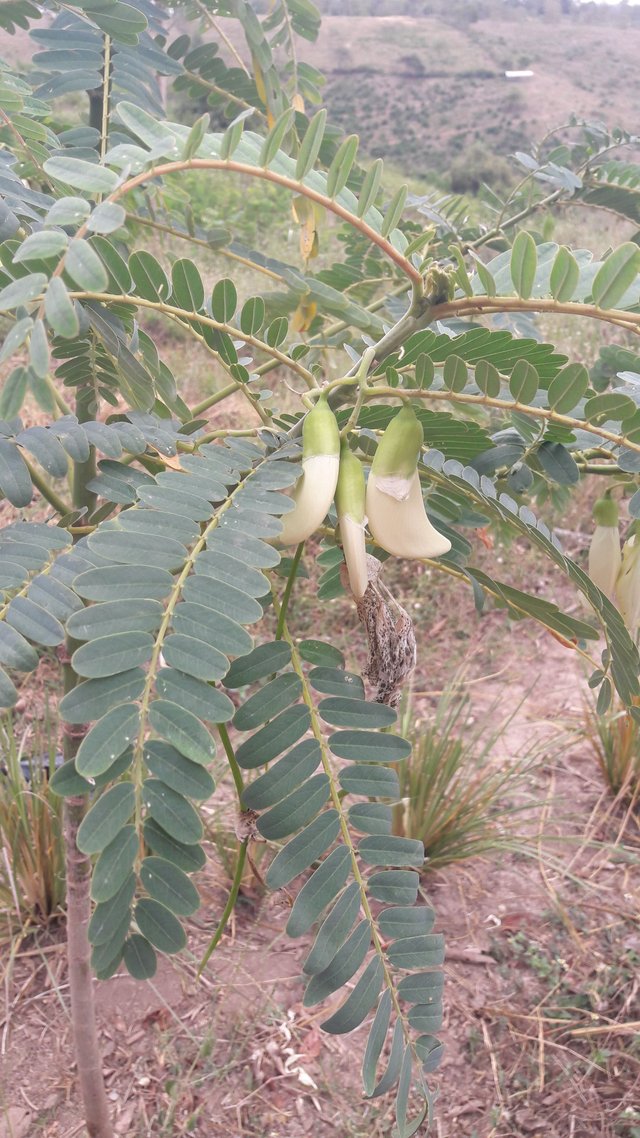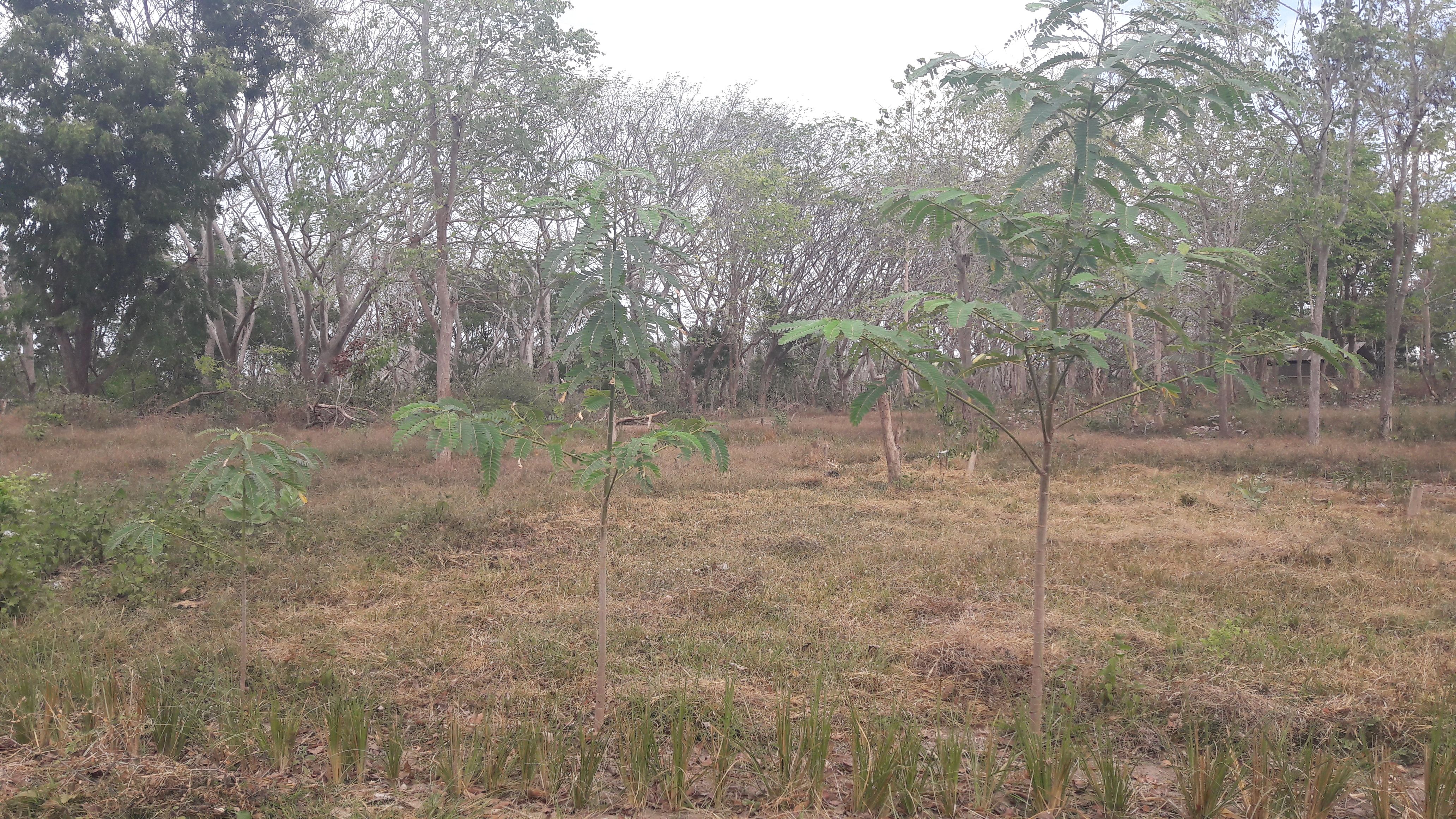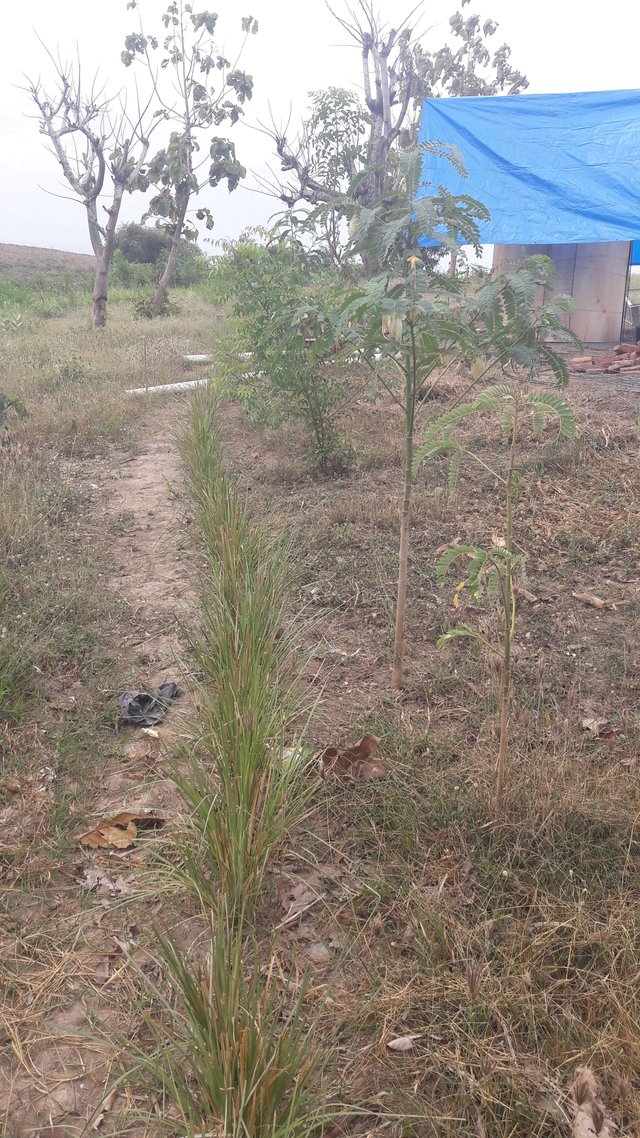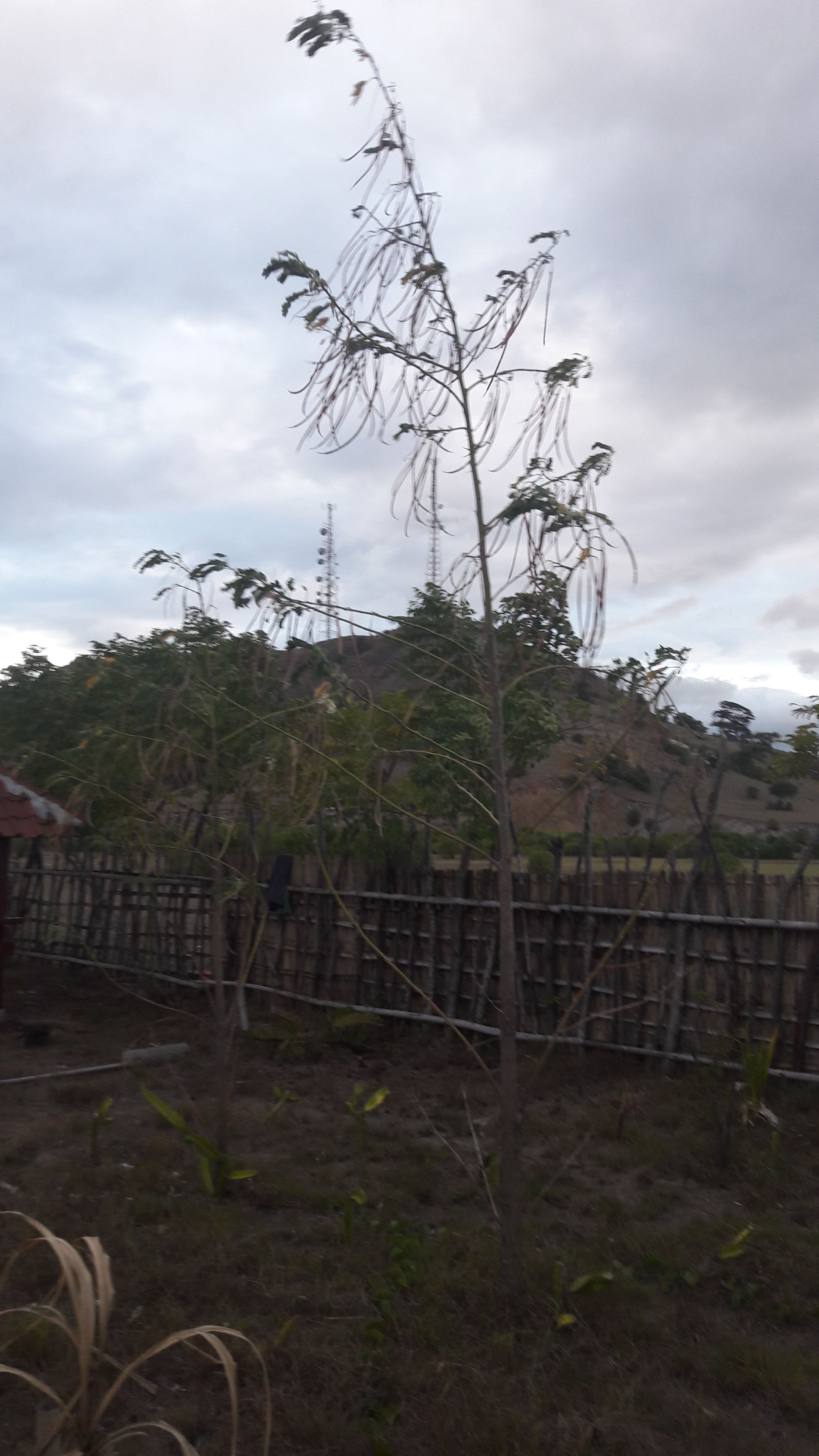Lombok permaculture plant #1 - Kentujur (Sesbania grandiflora)
Good Evening Steemians! I thought i'd try posting some content from my phone this time, as an alternative to those heavier carefully thought over and sweating over the grammar posts
Lets call this @reville - lite ;)
I want to share with you some of the plants at our demonstration site as though theyre quite familiar to us i've come to realise they arent so common elsewhere
We are in Lombok, Indonesia. Its the Island next east of Bali and we are in the extreme south east. We have a demonstration plot in some damaged forest where we are trying out some techniques to rehabilitate the site and the economy

This Tree is amazing. Sesbania grandiflora , here its called Kentujur or Turi, in India its Agathi, and in English the Hummingbird tree
It has edible flowers, leaves, it grows super fast and we can use the wood poles for roofing support timbers in building after 3 years, which makes it faster to mature than bamboo
Cut wood is soaked in the sea by the mangroves for a month and the salt makes the wood unattractive to borers.

Can you believe these trees were planted only 5 and a half months ago from a 10cm seedling.
We pulled out 500 of these from around established trees in a nearby garden, we wrapped them in wet banana leaves and transplanted to this site.
Many are flowering already and some are over my head (>6 feet)
Kentujur can do this because it has bacteria living on its roots that may pull up to 500kg of nitrogen fertiliser from the air per Hectare planted to this tree
We are pairing it up with vetiver grass on the contour to create a soil stabilising and mulch producing partnership

The Kentujur feeds the Vetiver grass the nitrogen it needs to stay productive, which is cut to mulch our fruit trees like Mango, Citrus and Acerola.
Eventually when its all established we'd like some sheep and then this tree and the grass will be the food supply for the animals.
A diet of 75% Vetiver and 25% Kentujur will support our animals.
We transplanted 500 trees and about 300 survived. This december we want to plant another 2000 plus direct seed some more. No special treatment needed just plant it.

This photo was taken at the wrong time but it shows one i planted in nearby Sumbawa 1 year ago. Its so tall. And this is growing in pure sand, almost no water, super salty and poor soil, 35 C heat , and just a little compost
Im the dry season where there can be 7 months of no rain, it just drops its leaves and waits.as soon as rain returns it springs back to life.
Kentujur really is one of my favourite pioneer plants for the Tropics
If you'd like to see more please follow @reville
It would be really interesting to see this land after some rotational grazing from the sheep :] 100% upvote + resteem and followed. I cant wait to see updates on this.
This land is being reforested, think food forest mixed with native forest in a drier area.
Theres too many dangers to allow open grazing.
We will used raised pens with slotted floors to do cut and carry system.
We cut the grass and legumes every day and supply to the animals.
The manures will be vermicomposted and then used to support forest compatible understorey crops.
So far we have about 150 fruit trees planted on this site with another 150 in the nursery awaiting the rainy seaon.
This demonstration plot is trialling and demonstrating methods that suit the area and culture, improve nutrition and income, and provide alternatives to slash and burn maize monocrop with chemicals.
slash and burn is the worst! This is awesome I would love to be involved in a project similar to this.
Theres two types of slash and burn.
One is cyclical where the forest returns as part of the cycle.
Its actually the most environmentally friendly type of Agriculture.
Its really embedded in natural pricesses and biodiversity
The other is non cyclical.
It advances across the landscape burning away ecosystems never to return
It leaves behind erosion, poverty and a simplified weedy landscape.
Step by step. Id like to keep some burning in this system, particularly to turn spiny or diseased biomass into Biochar.
BioChar would be a great way to process the material into useable product.
We will However, be trialling rotational grazing on some Islands off the coast of Sumbawa.
They are Anthropogenic grasslands that are burnt each year.
The biodiversity is very poor
We believe we can control fire, build soil, give income and increase biodiversity by controlled grazing these grasslands
Perhaps building a firewall (clear land) around the land would protect you. Its awesome your so involved in this, I would love to drop my life and just reverse desertification in the harshes climates(mojave desert)
I'm originally from Australia where wild fires are a part of life in the Sclerophyll forests and heathlands of the Subtropical and meditteranean climate zones
Its surprising here in what is called Tropical dry forest that fire is not so common
It can burn, it just normally doesn't in its undisturbed state. When humans interfere we often make it more flammable.
We are using a few methiods of control. one is keeping the grass short, another is planting evergreen non flammable plants, another is careful placement of small fields that act like firebreaks. There we can grow bananas, cassava, chilli peppers and sweet potato.
Im also encouraging the farmers to collect the organic matter and use methods like trench composting, Hugelkultur, biochar and chicken composting as an alternative to their current practice of burning all residual organic matter to ash.
Permacylture is the way, biochar would be far better.
Congratulations @reville! You have completed some achievement on Steemit and have been rewarded with new badge(s) :
Click on any badge to view your own Board of Honor on SteemitBoard.
For more information about SteemitBoard, click here
If you no longer want to receive notifications, reply to this comment with the word
STOPThis is really cool. It's awesome that you are trying to make a damaged area sustainable and useful again.